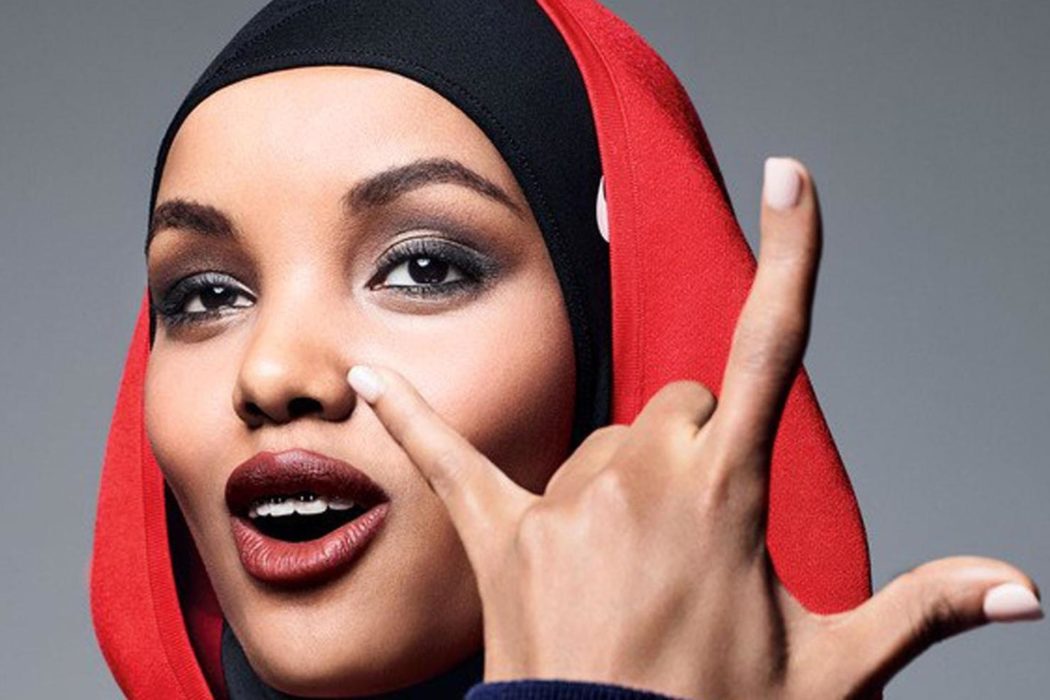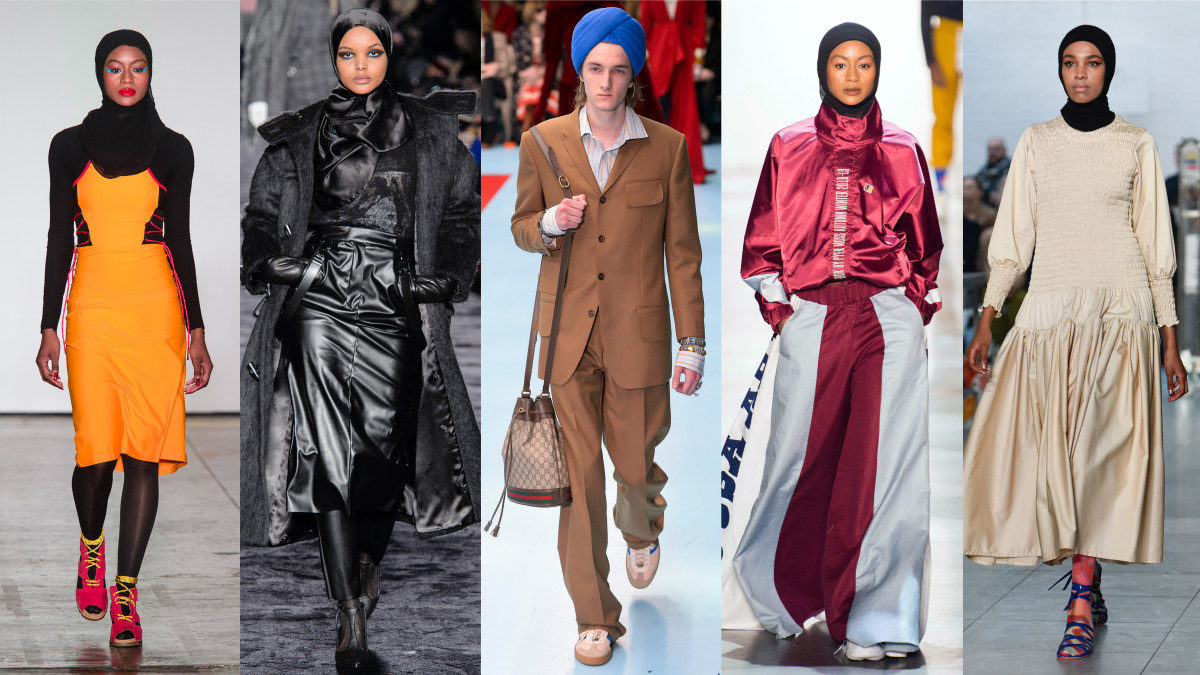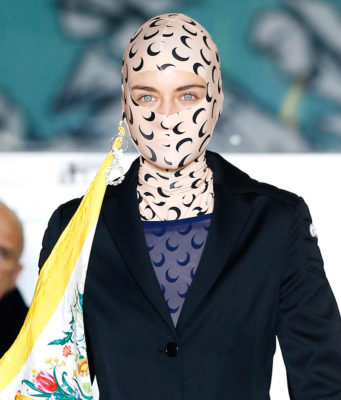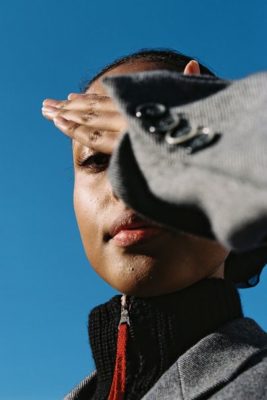Hijabs – or head scarves- have always been a divisive topic of conversation, representing a rich mixture of politics, religion and fashion that is just waiting to be picked apart. Although it has generally been perceived negatively, the hijab has recently had the opportunity to shine in the spotlight, with brands such as Dolce and Gabbana, Nike and DKNY releasing lines of hijabs for consumers. But is this a bid to be more inclusive, or just to gain more money and capital?

Let’s look at the facts. In 2013, Muslim shoppers were estimated to spend $266 billion on clothing and footwear, a figure that is expected to increase to $448 billion by next year, according to Quartz Magazine. The Middle East in particular is a market just waiting to be tapped; their penchant for designer clothes and haute couture make them the perfect target demographic for luxury brands. Hence Dolce and Gabbana’s 2016 collection of hijabs and abayas – long, free-flowing robe-like dresses worn by many Muslim women.
Other high-end brands such as DKNY, Tommy Hilfiger, Oscar de la Renta, and more have cashed into the market. Lower-end brands are also jumping on the bandwagon, with H&M’s 2015 “Close the Loop” campaign featuring hijabi model Mariah Idrissi, and Japanese basics brand Uniqlo pairing with Muslim fashion designer Hana Tajima to create a lightweight line of modest clothing that includes hijabs.
Despite the popularity of hijabs in fashion, however, they are rarely being worn by Muslim women in the campaigns. Dolce and Gabbana featured their supposedly revolutionary line only on white women. Gucci again dressed white models in not only hijabs, but also niqabs, bindis, and even turbans for their 2018 Milan Fashion Week show, earning ire from not only Muslim and South Asian people but also Sikh people.

Model Gigi Hadid, someone that although from Palestine is NOT Muslim, decided that it was cool to wear a bejewelled hijab on the inaugural cover of Arab Vogue. Designer Anniesa Hasibuan had this to say of Unapologetically Muslim, a report released recently that details the economic and cultural impact of millennial Muslim women:
“Wearing a hijab is not simply a fashion choice – it is a commitment to a modest way of life…If it is worn by a supermodel in a revealing outfit, this religious meaning is lost”

When LVMH Prize winner Marine Serre sent out the first look of her AW18 collection, she said that, “by putting a blue-eyed, white woman in (the) first look, I thought it was actually saying, ‘Why should we actually be afraid of dressing in a hijab?” While her intentions were honourable, they inadvertently backfired.
We live in a world where Muslim women are unable to outwardly express their commitment to God without the fear of being harmed. The only reason white women can do so is because they are protected by their privilege. They are taking from Islamic culture and religion without considering the meaning the garment has. They are able to wear it without fear of persecution, because to them, the hijab is just a piece of cloth with no significance beyond aesthetic value.
Frankly, taking such a powerful garment and removing it from its original context to a mere accessory, all to make a profit, is spitting in the faces of people that are fighting for the right to wear it or the right NOT to wear it. That being said, when Islamic fashion is featured on actual Muslims, it flourishes. There is so much diversity in hijabi fashion that, when rightfully showcased, can accurately show the beauty and authenticity of the Muslim world.
The rise in hijabi fashion has allowed many new faces to represent their religion in a way that doesn’t compromise their style or their commitment to religion. Halima Aden, a 19-year-old Somali model, is a rising star in the modelling world, featuring in campaigns for Fenty Beauty and Nike’s Sporty Hijab, and walking for Kanye West’s Yeezy Season 5 show at New York Fashion Week. Mariah Idrissi’s career has flourished since her 2015 H&M campaign, modelling for brands such as UAE e-tailer Namshi and MAC cosmetics. 20-year-old London based model Shahira Yusuf is the first Muslim model to sign with Storm Modelling Agency, also home to model Kate Moss.

The popularity of the hijab has also seen the rise of Muslim beauty vloggers and influencers. Many online personalities have found success through partnering with big-name brands. Vlogger Nura Afia is the first ever Hijabi “CoverGirl” and vlogger Amena Khan is the first hijabi spokesperson for L’Oréal hair care products. There are some that have even started their own lines, such as Youtuber Habiba da Silva who launched her own range of hijabs, titled “Skin”, and Melanie Elturk, CEO of renowned Hijab brand “Haute Hijab”.
These trends hopefully point to a future where the hijab is appreciated- not appropriated- for its beauty and diversity but also for its true religious meaning, the meaning it has to Muslim women around the world.
What do you think about this trend in high-fashion? Is it inclusive or exploitational? Comment below!







